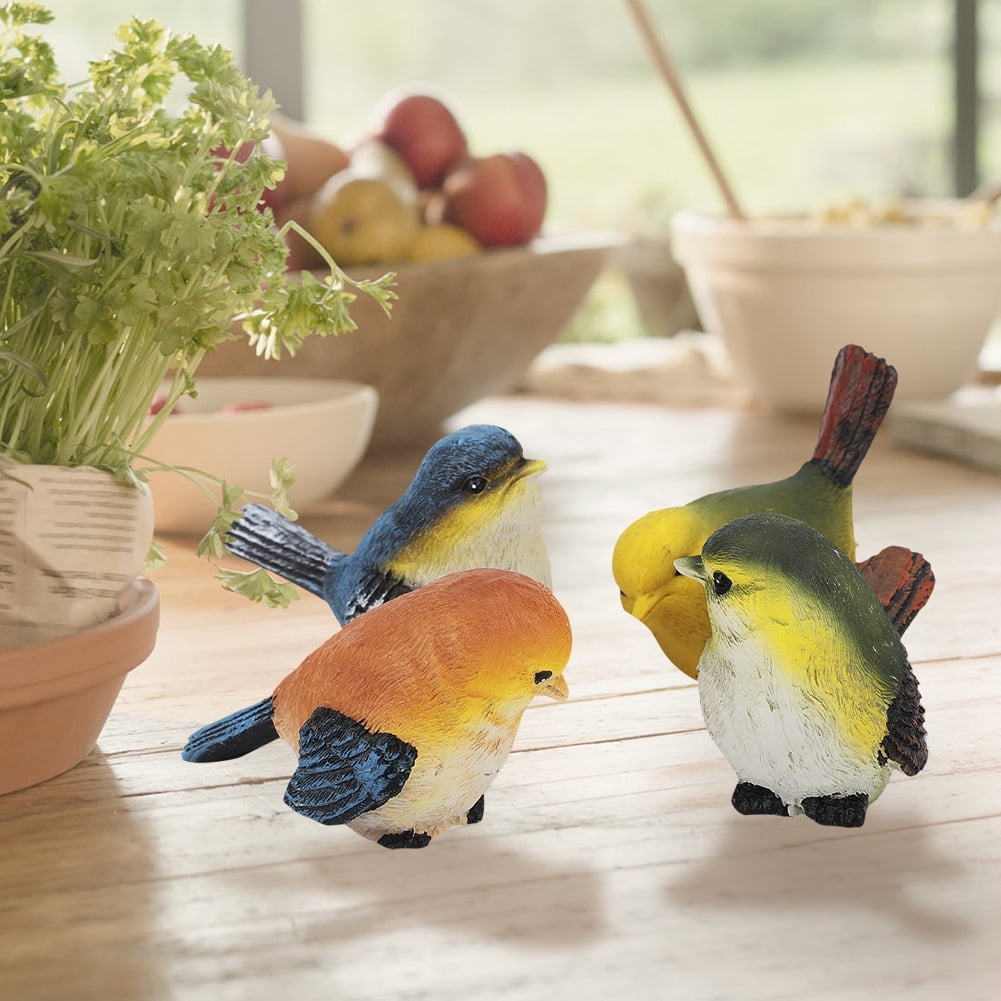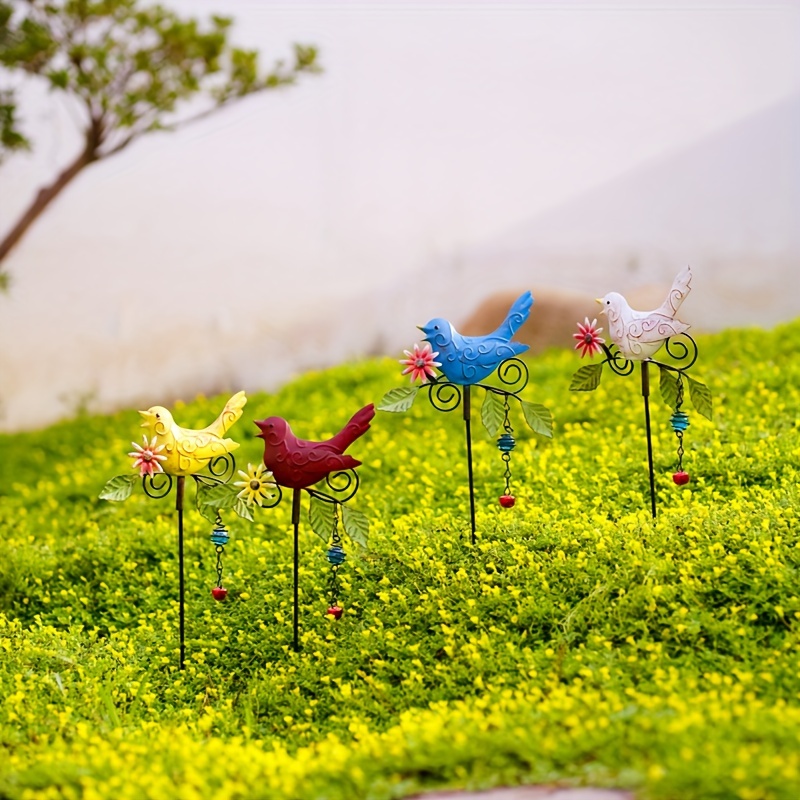Welcome to the delightful world of garden decorative birds! As a passionate gardener and nature enthusiast, I can assure you that these charming adornments can elevate the aesthetic appeal of your outdoor space and create a serene atmosphere. In this article, we will explore everything from types of decorative birds to their benefits and how to incorporate them beautifully into your garden. So, let’s dive in!
What Are Decorative Birds?
Decorative birds are artistic representations of avian species used primarily for garden ornamentation. They can be made from various materials such as metal, ceramic, wood, or resin, providing an array of styles to suit any garden theme. Whether you want a whimsical touch or a more sophisticated vibe, there’s a decorative bird for you!
Common Materials for Decorative Birds
- Metal: Durable and weather-resistant, metal birds can be found in various finishes, including painted, rusted, or polished.
- Ceramic: These often feature intricate designs and glazes, adding a colorful touch to your garden.
- Wood: Wooden birds provide a rustic feel and blend seamlessly with natural surroundings.
- Resin: Lightweight and versatile, resin birds can mimic other materials and offer a range of designs.

Benefits of Using Decorative Birds in Your Garden
Incorporating decorative birds into your garden can offer a multitude of benefits beyond aesthetic appeal:

1. Aesthetic Enhancement
Decorative birds can serve as focal points or accents that enhance the visual interest of your garden. They can complement your existing plants and garden features, creating a harmonious and inviting environment.
2. Wildlife Attraction
While they may not attract birds in a traditional sense, decorative birds can complement bird feeders and baths, creating a habitat that invites real birds to visit.

3. Personal Expression
Decorative birds allow you to showcase your personality and style. Whether you prefer whimsical designs or more elegant sculptures, you can express different moods and themes.
4. Conversation Starters
Guests will love to see decorative birds in your garden, stirring up engaging conversations about their designs, meanings, and the stories behind them.

Types of Decorative Birds to Consider
When selecting decorative birds for your garden, it’s essential to know the various types available. Here’s a comprehensive list of popular styles:

1. Garden Statues
These are typically larger and stand on their own. Garden statues can be realistic or abstract, adding a dramatic flair to any outdoor space.
2. Hanging Birds
Hanging decorative birds can be suspended from branches, hooks, or ceilings. They often come in vibrant colors and can move with the wind, adding dynamism to your garden.

3. Birdhouses
While primarily functional, many birdhouses are designed artistically and can serve as both a home for real birds and a decorative element.
Comparison Table of Decorative Bird Types

| Type | Material | Best For | Price Range |
|---|---|---|---|
| Garden Statues | Stone, Metal, Ceramic | Focal Points | $50 – $500+ |
| Hanging Birds | Metal, Wood | Movement & Color | $10 – $150 |
| Birdhouses | Wood, Metal, Resin | Attracting Wildlife | $15 – $200 |
How to Choose the Right Decorative Birds for Your Garden
Choosing the right decorative birds involves considering several factors:
1. Garden Theme
Consider your garden’s overall theme. Are you aiming for a whimsical fairy garden, a serene Zen space, or a rustic cottage style? Your decorative birds should complement this theme.
2. Size and Scale
Think about the scale of your garden. Large statues can overwhelm small spaces, while tiny decorations can get lost in expansive gardens. Balance is key!
3. Color Palette
Select colors that harmonize with your existing plants and flowers. For a vibrant, playful atmosphere, opt for bright, eye-catching birds. For a more subdued look, choose earth tones.
4. Material Durability
Consider the weather conditions in your area. Metal and resin are typically more durable than wood or ceramic in harsh weather.
Setting Up Your Decorative Birds
Once you’ve selected your decorative birds, it’s time to integrate them into your garden. Here are some tips:
1. Create Focal Points
Position larger statues in strategic locations to draw the eye, like at the end of a pathway or near a seating area.
2. Use Layers
Layer your decorations by placing smaller birds at different heights. This adds depth and interest to your garden design.
3. Integrate with Nature
Blend your decorative birds among existing plants. For example, place a ceramic bird among flowers, or hang a metal bird from a tree branch.
4. Seasonal Adjustments
To keep your garden fresh, consider rotating your decorative birds according to the seasons or holidays.
Maintaining Your Decorative Birds
Like any garden elements, decorative birds require maintenance to keep them looking their best:
1. Regular Cleaning
Dust or wipe down your decorative birds regularly to prevent the buildup of dirt and debris. Use mild soap and water to clean them gently.
2. Seasonal Checks
Inspect the condition of your birds, especially after harsh weather. Look for signs of rust, wear, or damage and take action accordingly.
3. Protecting from Elements
Consider storing more delicate decorative birds indoors during extreme weather, or use protective coatings to help them withstand the elements.
Pros and Cons of Garden Decorative Birds
Pros
- Add visual interest and personality to your garden.
- Can attract real birds when paired with birdhouses and feeders.
- Versatile options to suit various styles and preferences.
- Can serve as gifts or souvenirs for garden enthusiasts.
Cons
- Some materials may deteriorate faster in harsh weather conditions.
- Could be targeted by vandals or thieves, depending on location.
- Requires regular maintenance and cleaning to keep them looking good.
Frequently Asked Questions About Garden Decorative Birds
What materials are best for outdoor decorative birds?
Metal and resin are generally the best materials for outdoor decorative birds as they are more durable and resistant to weathering compared to wood or ceramic.
How can I attract real birds to my garden?
Position decorative birds alongside bird feeders and baths, and plant native flowers to create a welcoming environment for real birds.
Are decorative birds expensive?
Prices can range significantly based on the type, size, and material. You can find options anywhere from $10 to over $500, allowing for budgets of all sizes.
How often should I clean my decorative birds?
Regular cleaning is essential; aim for once a month to keep them looking their best, with more frequent cleaning during pollen season or after storms.
Can I make my own decorative birds?
Absolutely! DIY decorative birds can be a fun project. You can use materials like wood, clay, or even recycled items to create unique designs that reflect your personality.
Conclusion
Decorative birds are a delightful addition to any garden, offering aesthetic enhancement and a chance for personal expression. With so many styles, materials, and themes available, you can find the perfect birds that resonate with your garden vision. By following the tips and insights shared in this article, you can create a charming oasis that attracts both real avian visitors and complements your outdoor living space beautifully. Happy decorating!